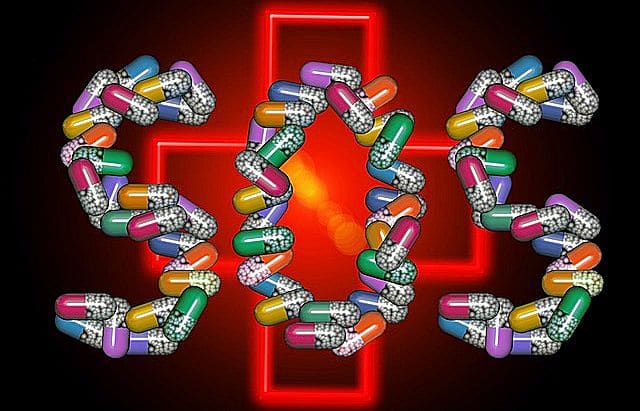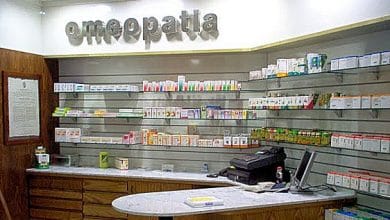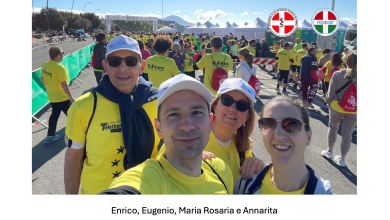
Only three hospital pharmacies, out of 21 examined, are safe. Another 12 have gaps that should be filled and 6 are totally inadequate from the point of view of security. This is what emerges from a survey carried out by the logistics and innovation area of Sifo (Italian Society of Hospital Pharmacists and Territorial Services) for the 'Padlock' project, launched in the first months of 2014 with the unconditional contribution of Roche, to place a brake on the phenomenon of theft of medicines, promote the prevention of the phenomenon and the safety of hospital pharmacies.
Posted on: 29/09/2015 – adnkronos
 The project started last year on the basis of surveys of the phenomenon: one hospital out of 10 suffers a major theft, with an average damage of 250,000 euros, and in the first 5 months of 2014 alone there were 37 'hit's, against 68 cases recorded between 2006 and 2013. In the lead, among the most 'coveted' drugs, are anticancer drugs, stolen in 52 cases between 2006 and May 2014 for a total of almost 11 million euros.
The project started last year on the basis of surveys of the phenomenon: one hospital out of 10 suffers a major theft, with an average damage of 250,000 euros, and in the first 5 months of 2014 alone there were 37 'hit's, against 68 cases recorded between 2006 and 2013. In the lead, among the most 'coveted' drugs, are anticancer drugs, stolen in 52 cases between 2006 and May 2014 for a total of almost 11 million euros.
The Padlock project analyzed the prevention systems of hospital pharmacies, developing a risk analysis carried out with the help of Scuola Superiore Sant'Anna and Logplus Srl. The results of this study, which examined 21 pharmacies hospitals of different sizes (a sample of small, medium and large), demonstrate that to stop thefts it is necessary to implement the security of the structures upstream, encouraging the centralization of stocks as far as possible. But also and above all by enhancing safety measures to better protect drugs and improving alarm activation and emergency management procedures.
To evaluate the 'weak points' of the structures, the procedure was as follows: each structure was assigned a risk class, assessing compliance with certain parameters, such as, for example, the presence of video cameras or sensors, access control and emergency procedures.
 In conclusion, it appears that only 3 out of 21 hospital pharmacies are on average safe. The majority does not reach the sufficiency (12 structures) and in 6 others the situation is even more critical: in fact they are classified as seriously inadequate. The first approach towards the solution to all this is contained in the Guidelines for hospital pharmacy, which will be presented at the Sifo National Congress, scheduled in Catania from 22 to 25 October.
In conclusion, it appears that only 3 out of 21 hospital pharmacies are on average safe. The majority does not reach the sufficiency (12 structures) and in 6 others the situation is even more critical: in fact they are classified as seriously inadequate. The first approach towards the solution to all this is contained in the Guidelines for hospital pharmacy, which will be presented at the Sifo National Congress, scheduled in Catania from 22 to 25 October.
“The pharmacists of Sifo are committed to combating pharmaceutical crimes”, explains Marcello Pani, head of the Sifo logistics and innovation area and contact person for the Padlock project. "The publication of a Nas-Sifo handbook for the prevention and management of drug thefts in pharmaceutical and territorial services - he continues - the collaboration with Aifa for the sharing of reports relating to thefts with the monitoring of all data and the Padlock project testify to Sifo's commitment and attention to citizens' health safety”.
 Numerically, 2013 and 2014 brought about a real surge in thefts from hospital pharmacies: in 2013 there were 51 cases and in the first 5 months of 2014 there were 37 thefts, against just 17 in the previous 7 years, from 2006 to 2012: the source is the Transcrime report (Research Center on Transnational Crime of the Cattolica of Milan and of the University of Trento), which analyzed the phenomenon taking into account the cases of theft reported by the media. As for the economic value, between 2006 and May 2014 medicines worth over 22 million euros were stolen: of these, almost 10.5 million went up in smoke in 2013 alone and 3.3 million in the first 5 months of 2014.
Numerically, 2013 and 2014 brought about a real surge in thefts from hospital pharmacies: in 2013 there were 51 cases and in the first 5 months of 2014 there were 37 thefts, against just 17 in the previous 7 years, from 2006 to 2012: the source is the Transcrime report (Research Center on Transnational Crime of the Cattolica of Milan and of the University of Trento), which analyzed the phenomenon taking into account the cases of theft reported by the media. As for the economic value, between 2006 and May 2014 medicines worth over 22 million euros were stolen: of these, almost 10.5 million went up in smoke in 2013 alone and 3.3 million in the first 5 months of 2014.
The most stolen drugs are anticancer drugs, stolen in 52 cases between 2006 and May 2014 for a total value of almost 11 million euros. In second place, among the most stolen medicines in the years considered, are antirheumatics (about fifteen cases for over 3 million euros) and immunosuppressants (over a dozen cases for over 8 million). Subsequently, biological, haematological, hormonal, sedative, psychopharmaceutical and neurological drugs were also targeted.
The regions most affected by the phenomenon of 'hit' in hospital pharmacies, both numerically and economically, are Campania and Puglia: 61.7% of stolen anticancer drugs come from here. Between 2011 and 2014, Campania lost around 9.1 million euros, equal to 48.5% of the total value stolen; in Puglia the loss stands at approximately 3.5 million, 18.7%.





